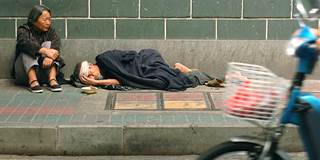Whereas Japan, South Korea, and Taiwan depended on export-led growth to catch up with the developed economies, China is simply too large to be able to continue to depend on external markets. To reach the next stage of development, it will need to forge its own growth path, which will require taking on powerful vested interests.
LONDON – It is often assumed that emerging-economy living standards are bound to converge with those in developed countries. But, leaving aside some oil exporters and the city-states of Hong Kong and Singapore, only three countries – Japan, South Korea, and Taiwan – have come from far behind to achieve per capita GDP of at least 70% of the developed-country average over the last 60 years. China hopes to do the same, but it faces a distinctive challenge: its sheer size.
Japan, South Korea, and Taiwan depended on export-led growth to catch up with the developed economies. But China – home to almost 20% of the world population and responsible for 15% of global output – is simply too large to depend solely on external markets. To reach the next stage of development, it will need to forge a different growth path – and that will require more difficult reforms than those on which attention is often focused.
To be sure, export-led growth has fueled China’s economic rise so far, with its current-account surplus growing to 10% of GDP in 2008. But such high surpluses are ultimately impossible to sustain. There simply is not enough import demand in the world to absorb ever-growing Chinese exports.

LONDON – It is often assumed that emerging-economy living standards are bound to converge with those in developed countries. But, leaving aside some oil exporters and the city-states of Hong Kong and Singapore, only three countries – Japan, South Korea, and Taiwan – have come from far behind to achieve per capita GDP of at least 70% of the developed-country average over the last 60 years. China hopes to do the same, but it faces a distinctive challenge: its sheer size.
Japan, South Korea, and Taiwan depended on export-led growth to catch up with the developed economies. But China – home to almost 20% of the world population and responsible for 15% of global output – is simply too large to depend solely on external markets. To reach the next stage of development, it will need to forge a different growth path – and that will require more difficult reforms than those on which attention is often focused.
To be sure, export-led growth has fueled China’s economic rise so far, with its current-account surplus growing to 10% of GDP in 2008. But such high surpluses are ultimately impossible to sustain. There simply is not enough import demand in the world to absorb ever-growing Chinese exports.